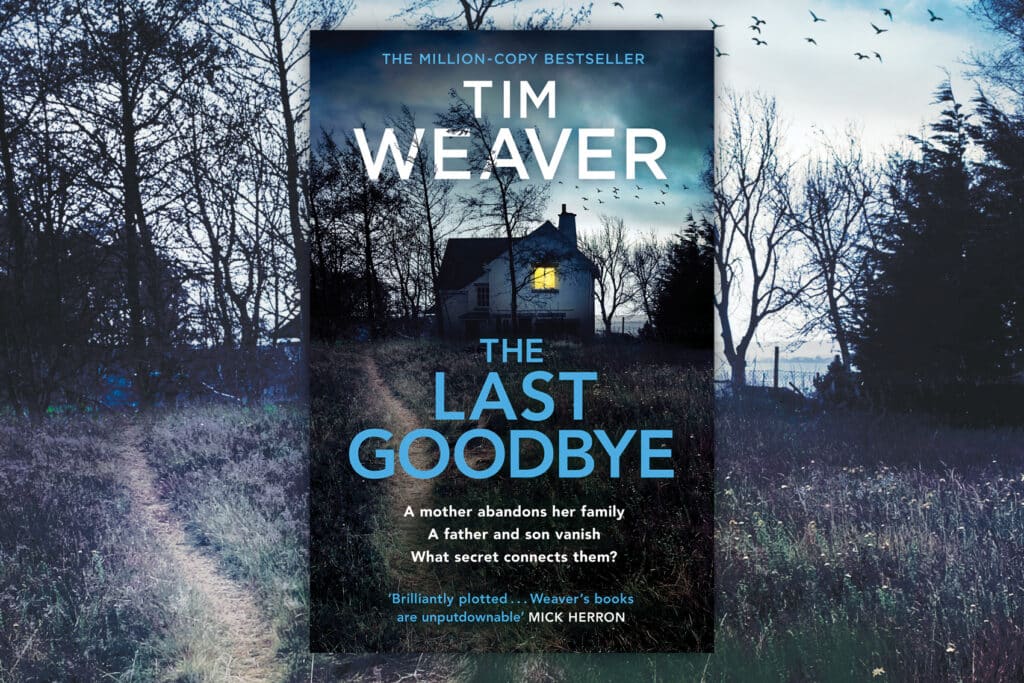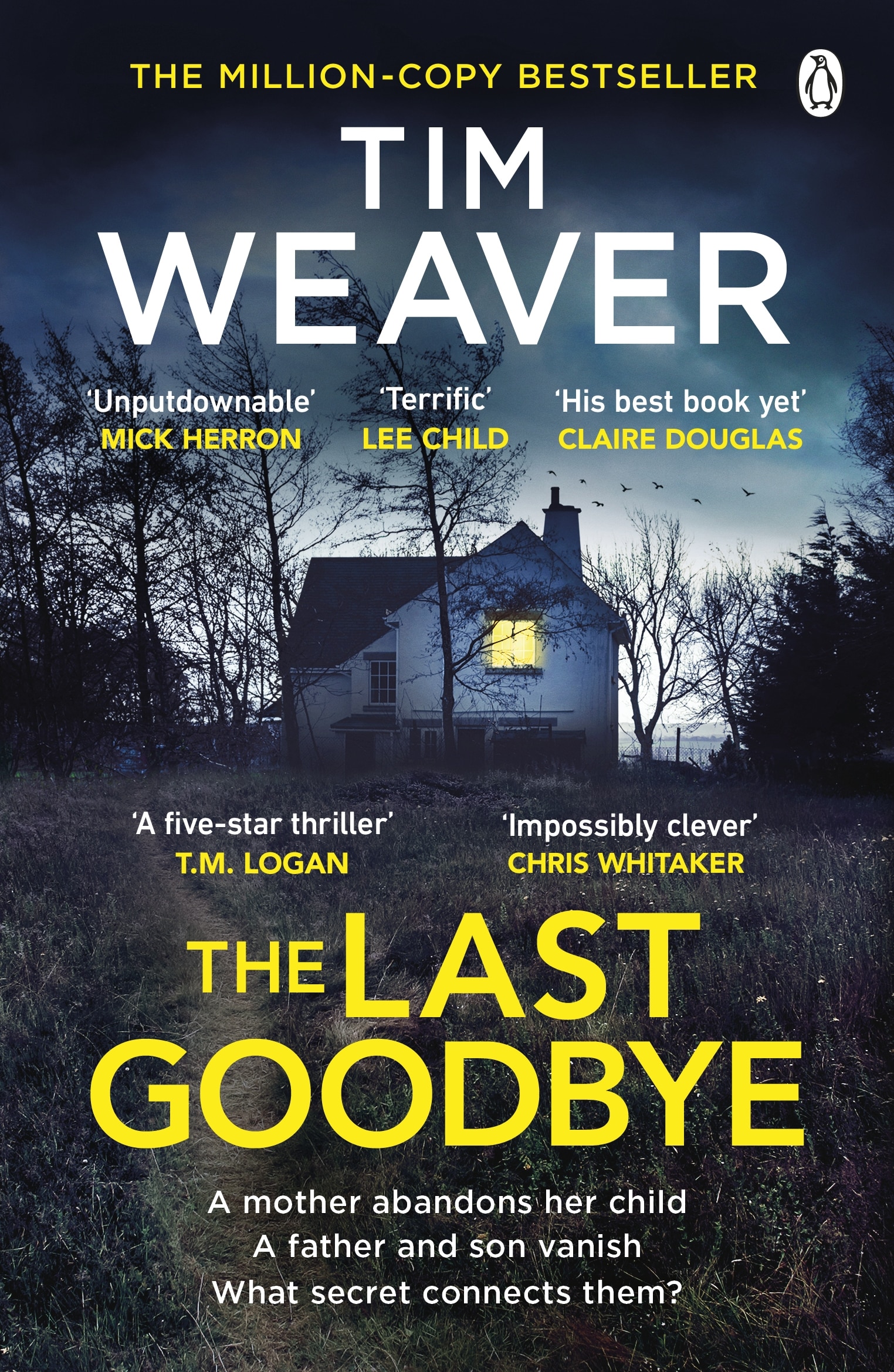Books
Extract: The Last Goodbye by Tim Weaver
Master of the crime thriller Tim Weaver has returned with his latest – and possibly best – in the David Raker series.
In The Last Goodbye, the renowned missing persons investigator is hired to find out if a mysterious letter from a mother who walked out of her daughter’s life almost 40 years ago is real – and whether it has any connection to a father and son who disappeared in an amusement park haunted house just a day ago…
Read below for an exclusive first taste of Weaver’s gripping new thriller!
The Last Goodbye
by
Tim Weaver
Day 2: Wednesday, 7 December
When the video starts, there’s no queue outside the ghost house. It’s early evening; only just opening time.
It’s still an hour and a half before they vanish.
It doesn’t take long for guests to start arriving. A couple of minutes in, two teenage girls walk-run through the snaking barriers to the front of the line and, when they see they’re the first on the ride, start to talk excitedly. A staff member, poised just inside the darkness of the entrance, comes out. He’s dressed to match the Himalayan theme of the ride: dark trousers, a battered snow jacket, woollen gloves, rope tucked into his belt, and a headtorch. He says something to the girls and they smile again – and then, a moment later, they disappear into the dark.
More people follow.
The queue builds.
After a while, the same two girls emerge from the exit, laughing. One of them mimics the scream she must have made on the ride. The camera is about fifty feet away – far enough back that it can take in the entrance on the left, exit on the right, and a middle section, which, with the placement of its windows and its broken door, has been deliberately constructed to resemble a face.
Slowly, over the next thirty minutes, the people who go in one side file back out the other. On average, the ride takes just under four minutes from beginning to end.
At 5.51 p.m., Tom Brenner and his nine-year-old son Leo join the queue. Tom is tall and wiry, well over six foot, and has a black baseball cap on. His son comes up to the crook of his elbow and is wearing a bright yellow backpack and a pair of white Nikes, the red tick visible on them, even from a distance. Afterwards, park staff find a selfie of them on Tom’s mobile phone screen. They share the same eyes and nose.
It takes them twenty-six minutes to get to the front of the queue. Preceding them are a group of four guys in their twenties: they’ve spent almost the entire time laughing. Behind the Brenners is a mother and her twin daughters.
As they’ve been queueing, Tom and Leo have been chatting almost constantly. It seems to come easily to them. A couple of times, Leo says something that makes Tom laugh and, on one occasion, Tom ruffles Leo’s hair. Leo spends quite a lot of his time in the queue pointing at things off camera – other rides, other sights at the fun fair. When they get to the final part of the queue – where the line runs along the front of the ghost house – the two of them start gesturing to the middle section of the structure: the slanted windows that look so much like eyes; the punctures in the edifice which imitate the shape of flared nostrils; then the big, open doorway that looks like a mouth, broken at the sides to give it more of an oval shape.
The group of four guys disappear inside the entrance further down and, when they do, the same member of staff beckons Tom and Leo towards him and says something to Tom. Tom smiles and looks at his son, and then speaks to Leo, but it’s impossible to make out what he says.
Finally, the Brenners enter the ghost house.
The four men exit three minutes and fifty-six seconds later. One of them does an exaggerated double-take as he tells a story and they all erupt into laughter. The clock in the corner of the footage ticks over for another thirty seconds.
At this point, Tom and Leo should be exiting.
But the clock keeps running.
Another thirty-two seconds pass and then the mother and her twins exit. One of the twins is crying. The mother tries to comfort them as they move out of shot.
Another half-minute and the people who’d been standing behind the mother and the twins come out of the ride. Then the ones behind them, then the ones behind them. It’s like a conveyor belt of people, one after the next, heading in and then coming out.
Except two people haven’t come out.
Another ten minutes pass.
It’s around this time that Tom’s mobile phone is discovered on the floor inside the ride because, less than thirty seconds later, one of the staff members emerges from the exit, holding the phone in his hand. It’s dark inside the ghost house but we find out afterwards that the staff member was alerted to the phone because it was ringing, the screen blinking on and off.
Tom’s wife, Sadie, was calling.
She’s on a spa break with her sister in Bath.
The mobile phone isn’t the only thing the staff member finds, though. He also finds the backpack that Leo was wearing, seven feet from the mobile phone. It’s lying on the floor, in one of the ghost house corridors, and it’s not until the member of staff brings it back outside, into the light – and then shows it to the guy working the entrance, who recognizes it as Leo’s – that the camera reveals what’s happened to the bag.
It looks like it’s been slashed by something.
There are two cameras inside the ride: one is about a minute in; the second one is right at the end, prior to the exit. Tom and Leo are recorded passing the first camera.
But they never reach the second.
It’s the space in between cameras where Tom’s phone and Leo’s backpack are found. In that same space there are no public entrances, and no ways out of the ride.
It’s impossible to explain what happened or where the Brenners have gone.
They’ve simply ceased to exist.
Like the ghost house has swallowed them whole.
Day 1: Tuesday, 6 December
Rebekah’s hotel was two minutes’ walk from Embankment station, so I got a District Line train in from Kew and spent the half-hour journey going over notes I’d made after our last call. In truth, there wasn’t much to read back: she recalled so little about the person that she’d asked me to find, and it had been so long since they’d disappeared.
Normally, families knew the missing person intimately.
But not this time.
Here, I was already chasing a shadow.
It was cold inside the carriage, colder in the station, and pretty much sub-zero at street level, the wind absolutely biting even under the roof of Embankment Place. I pulled up the collar of my coat and tightened my scarf as I crossed Northumberland Avenue but neither made any real difference: a week into December, winter was fully embedded, frost on the rooftops, tarmac glassed with ice, and it was the kind of cold that cut deep as a knife. As I approached the hotel, I briefly wondered how Rebekah was coping with this weather – and then, almost as quickly, realized she’d be coping just fine. She’d come from a place every bit as cold as this and had dealt with the kind of trauma most people would go their whole life without experiencing. Rebekah Murphy wasn’t going to be fazed by a little cold.
A wall of warm air hit me as I entered the hotel foyer, lights blinking in an elaborate Christmas tree off to my right. A fire had been lit, flames dancing in the neck of the chimney. We’d agreed 10 a.m. but I was a little early, so I found a chair as close to the fire as I could get and spent a while going through calls, texts and emails.
A few minutes later, Rebekah emerged from the elevators.
‘David,’ she said, as she approached.
She was in her early forties, dark-haired, green-eyed, her right temple marked by a scar that I knew – from what she’d told me already – was a remnant from an assault on her the previous year. I stood, shaking her hand. She had a quiet, unassuming confidence, a calmness I’d already noted on our videocalls. All of it, I imagined, had been cultivated in the emergency rooms and operating theatres of the hospitals she worked in back in New York, where she was an orthopaedic surgeon.
There was a man in his seventies standing behind her.
‘This is Frank,’ Rebekah said.
I shook hands with him too and wondered who he was. She hadn’t mentioned that she was going to be bringing anyone else – she’d left her two girls back in the US with her ex-husband – and I knew her father had died a few years ago. But whoever Frank was, he knew me because he smiled and said, ‘Pleasure. Big fan of your work.’
He had a New York accent, unlike Rebekah: despite living in the US since she was eighteen, she still spoke like a Brit, even if some of her words and phrasing had become heavily Americanized. As if sensing my confusion, she said, ‘I didn’t mean to throw you. Frank coming with me was kind of a last-minute decision.’
And then it clicked: this must be Frank Travis.
I’d read about him in the stories that had helped fill in background on Rebekah. After the assault on her the previous year, Travis had been the NYPD cop that had worked her case. Even without her having to say anything else, I could see the tight bond they’d forged in the time since.
‘Frank used to be a cop,’ she confirmed. ‘This is, uh… This is a big step for me, flying all the way out here. I just needed some moral support.’
I nodded. ‘I understand.’
And I genuinely did: I totally got her desire to have him here – someone she trusted, who made her feel safe – because she didn’t really know me at all and what she was asking me to do – the digging into her life, the questions I’d have to ask about the people that circled it – was something pretty far from safe. I’d met her in New York earlier in the year while I was there on holiday, a chance meeting in Bryant Park, and we’d got talking, and I’d ended up telling her what I did – and then she’d asked me for a card. But it had taken her two months to even phone me.
Another five to pluck up the courage to get on a plane.
‘I just want answers,’ she said, even as the doubt lingered in her voice. She glanced at Travis and, again, I glimpsed the connection they had: familial, gentle, protective. ‘I just need to know why my mother disappeared. I need to know why I didn’t hear a thing from her for almost forty years.’
The three of us looked at each other.
‘And I need to know why she suddenly started writing to me.’
Enjoyed this extract from The Last Goodbye by Tim Weaver? Let us know in the comments below!



Please note: Moderation is enabled and may delay your comment being posted. There is no need to resubmit your comment. By posting a comment you are agreeing to the website Terms of Use.